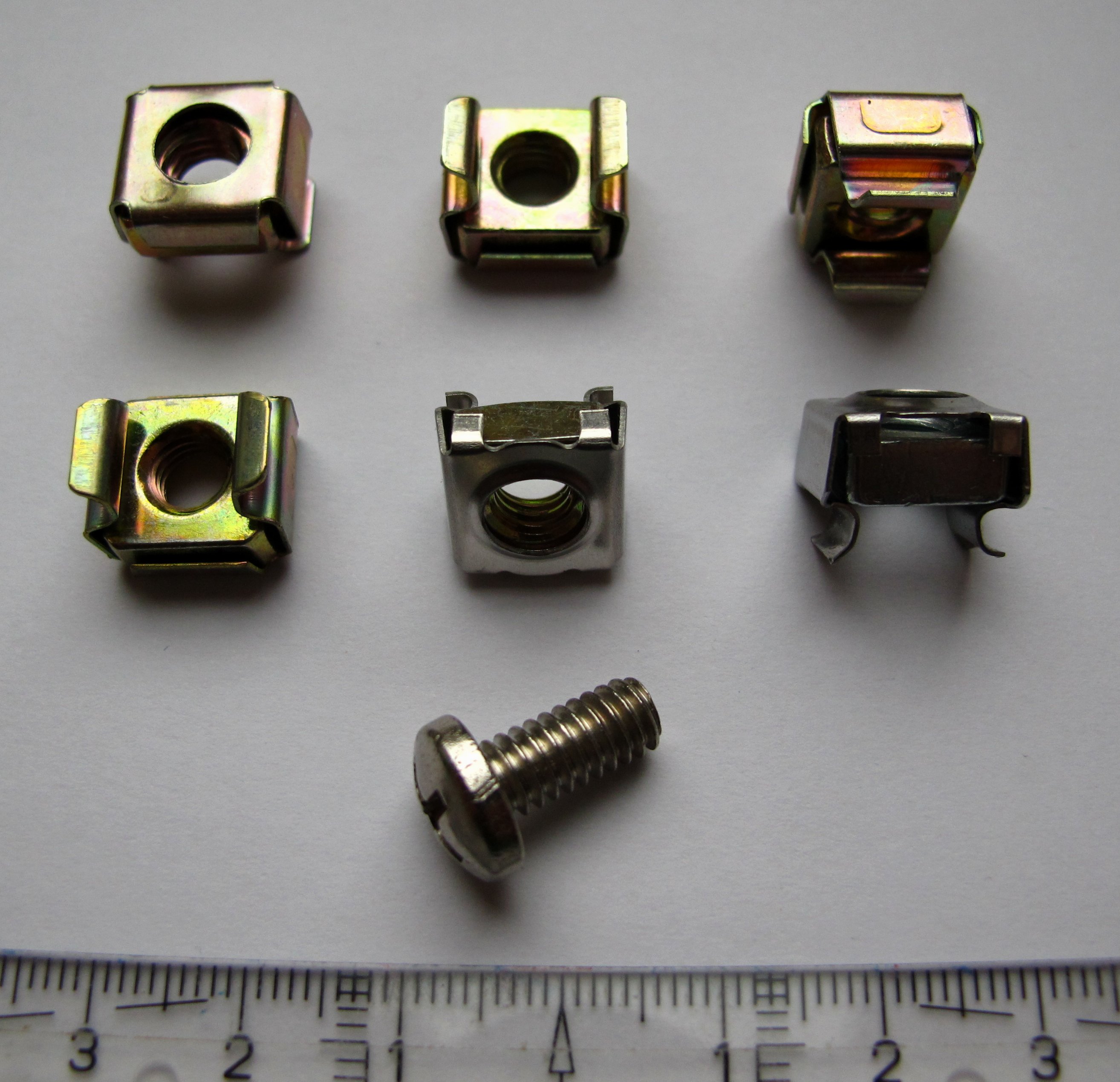|
Captive Threaded Fastener (other)
{{disamb ...
A captive threaded fastener may refer to: * Cage nut * Clip-on nut * Rivet nut * Threaded insert A threaded insert, also known as a threaded bushing, is a fastener element that is inserted into an object to add a threaded hole. They may be used to repair a stripped threaded hole, provide a durable threaded hole in a soft material, place a thr ... [...More Info...] [...Related Items...] OR: [Wikipedia] [Google] [Baidu] |
Cage Nut
A cage nut or caged nut (also called a captive or clip nut) consists of a (usually square) nut in a spring steel cage which wraps around the nut. The cage has two wings that when compressed allow the cage to be inserted into the square holes, for example, in the mounting rails of equipment racks. When the wings are released, they hold the nut in position behind the hole. Cage nuts conforming to this description were patented in 1952 and 1953. This design requires insertion tools to install the cage nut into the hole. Newer designs featuring a squeeze-and-release tab allow for tool-less installation. The square-hole cage nut can be used wherever a square hole can be punched. An older type of captive-nut uses a spring clip that holds the nut and slides on the edge of a thin sheet. While this type of cage nut can only position the nut a fixed distance from the edge of a thin plate, it works equally well with square and round holes. A patent for such a nut was granted in 1946.George A. ... [...More Info...] [...Related Items...] OR: [Wikipedia] [Google] [Baidu] |
Clip-on Nut
A clip-on nut, also known as a sheet metal nut or a speed nut (but this is ambiguous, see speed nut), is a type of nut designed to be clipped to sheet metal. It is a type of captive nut commonly made as a cage nut. Types They come in many forms based upon: where they clip on, shape, and type of thread. Each clip-on nut is designed for only a small range of sheet metal gauges (thicknesses). They are usually made from spring steel. G-nut A G-nut, or G-style nut, is shaped like a "G" and clips to the edge of a sheet metal object. It is different from all of the other types in that it is meant to clip over a small flange on the edge of the sheet metal. The threads are from an integrated nut that has a special boss to sit in a hole in the sheet metal. J-nut A J-nut is a nut that clips to the edge of the sheet metal. It is named after the way it is shaped; the thread is on the long side of the "J". The thread may either be of a speed nut form or have an integrated hex or square n ... [...More Info...] [...Related Items...] OR: [Wikipedia] [Google] [Baidu] |
Rivet Nut
A rivet nut, also known as a blind rivet nut, or rivnut, is a one-piece internally threaded and counterbored tubular rivet that can be anchored entirely from one side. It is a kind of threaded insert. There are two types: one is designed to form a bulge on the back side of the panel as a screw is tightened in its threads. The other is similarly drawn in using a screw, but is drawn into the sleeve instead of creating a bulge. History The first rivet nut was created by BF Goodrich in the 1930s, and sold under the trademark RIVNUT®. It was first used to mount rubber de-icing boots to aircraft wings. Usage In the field of aviation, rivet nuts are often used to attach various items, such as static dischargers and inspection access covers, to the surface of an aircraft. Rivet nuts are an ideal replacement for weld nuts because they will not distort base materials, eliminate weld splatter, toxic fumes, and other by-products of the welding process, and can be installed in many di ... [...More Info...] [...Related Items...] OR: [Wikipedia] [Google] [Baidu] |


